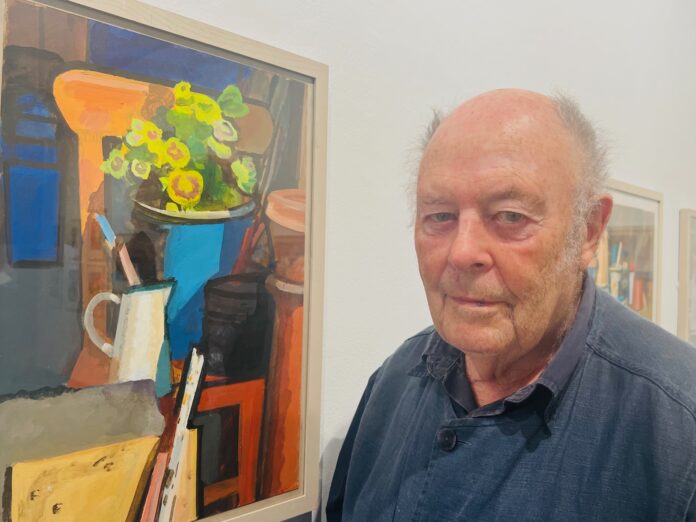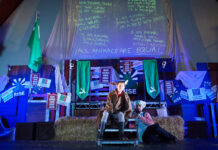Famous artist Jeff Clarke is 88 and a half years old, a fact he tells me rather proudly.
Surrounded by 62 of his colour paintings in the North Wall gallery, where his new exhibition Sunlight On Forms has just opened, his age doesn’t appear to be affecting his prolifacy.
“I am pleased, and deeply relieved, that the work stands up, because you can never be satisfied with an image as an artist, and the exhibition has more synthesis than I’d expected,” he says.
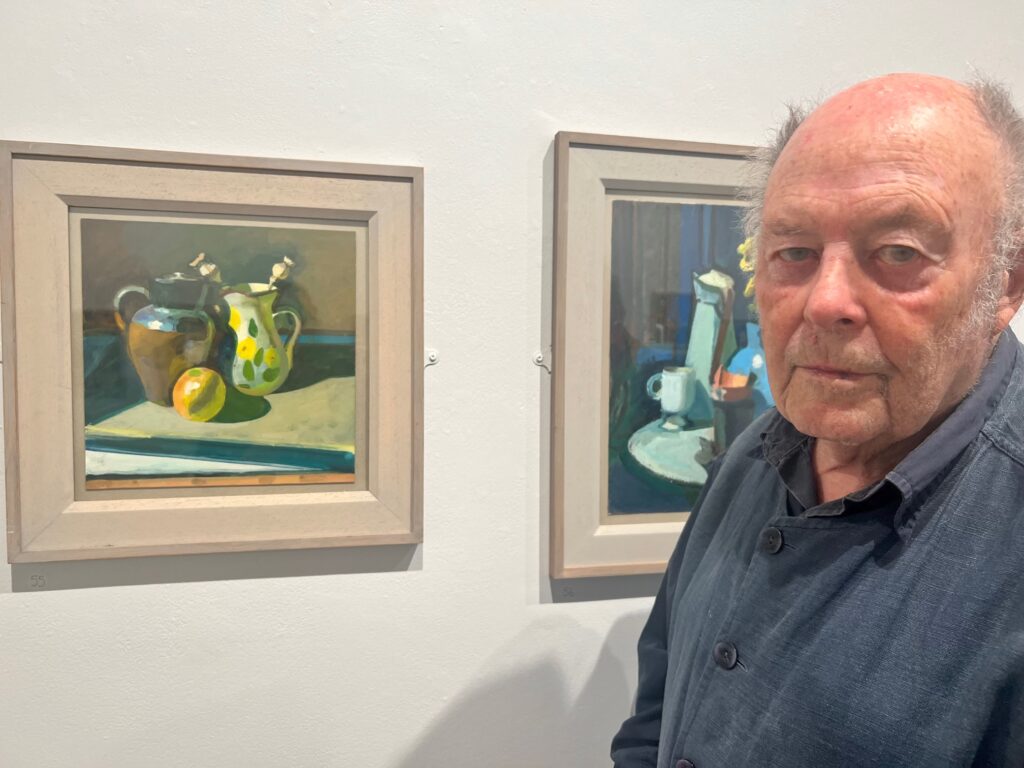
Considering his work is in collections of the British Museum, Ashmolean Museum, the universities of Oxford, Reading & Cambridge, and private collections both here and abroad, it is a coup for the North Wall. “I hope that my art is a small aspiration to what is essentially a sensual experience – the stimulation of sun on objects,” he says.
Such an understated approach to an incredible and complex career seems typical of Jeff Clarke.
A contemporary and great friend of British abstractionist Terry Frost, Jeff battled with the artistic genre for 15 years before quitting painting entirely and escaping to Crete to become a draughtsman at the Knossos excavation site for the British School of Archaeology.
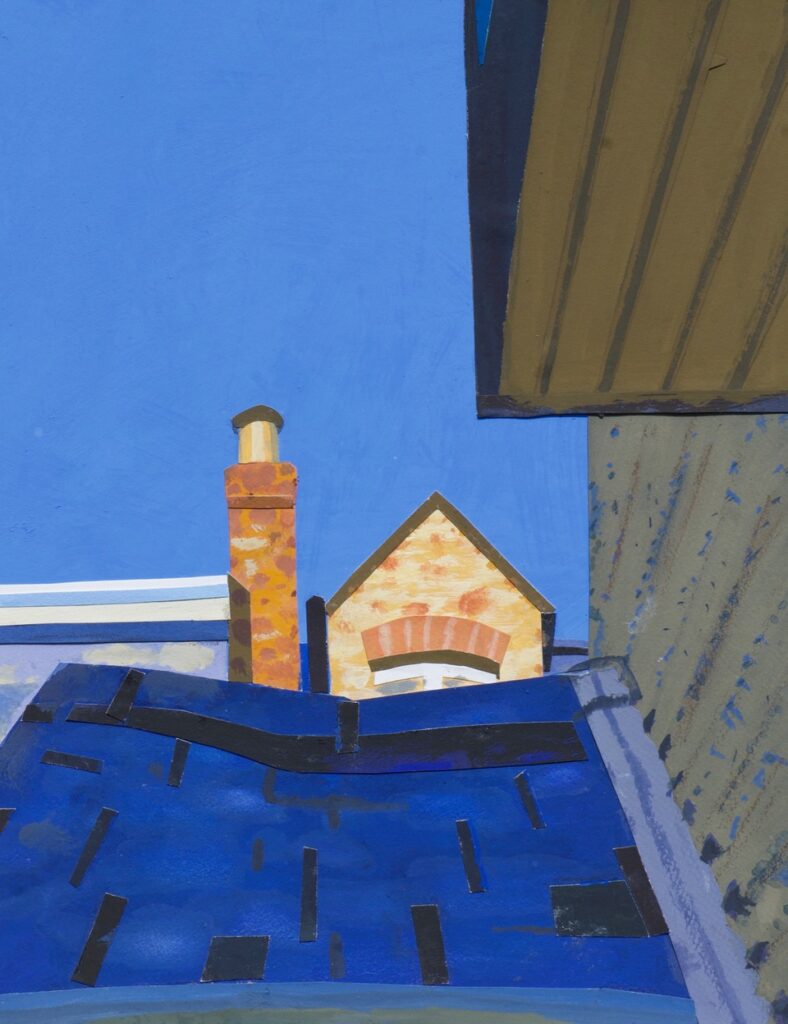
It took the the British Institution Fund and Prix de Rome scholar two years to even begin sketching again, and once he gave himself permission to adapt to his own style of painting, he was away, and has been depicting changing light on familiar objects ever since.
“You could call it a mid-life crisis,” he admits, “but yes, that realisation that I couldn’t be an abstract artist was a brutal development. After that I had to realise and find my own strengths – the visual world.
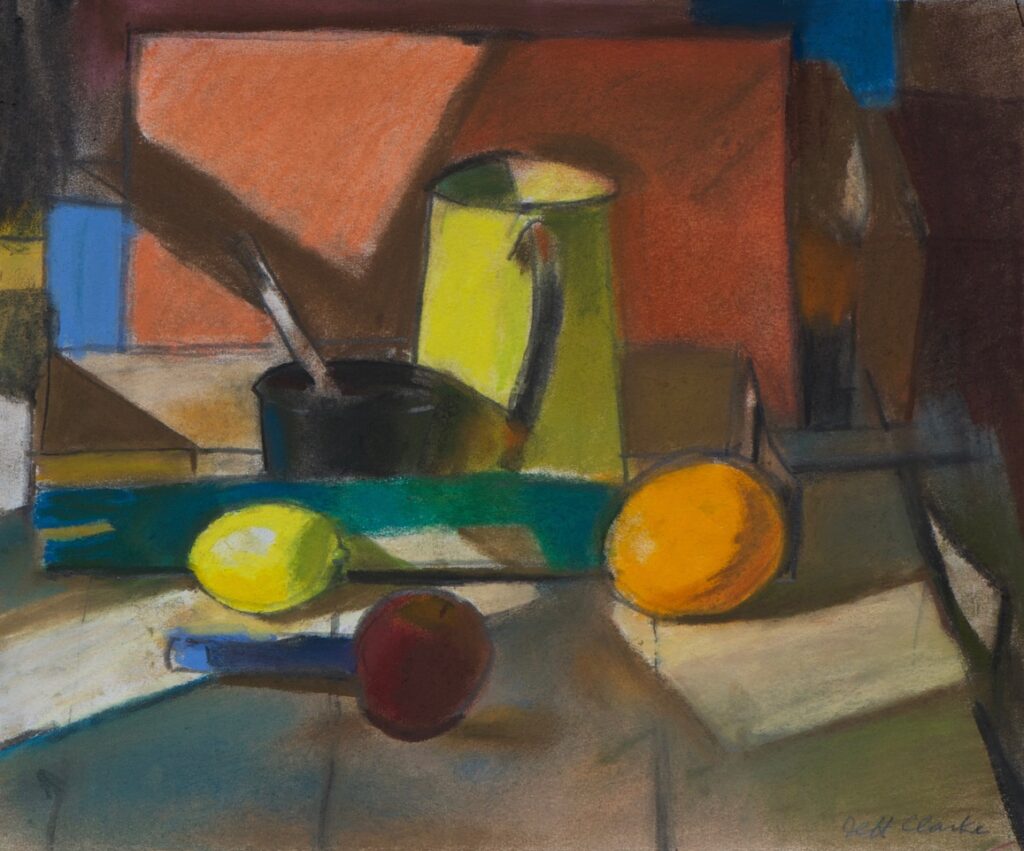
“And it took me a long time to recognise that the battle for a painter is not about skill but identity, and that my strength is in visual analysis and figurative interpretation” he muses.
Was that difficult? “I was just changing direction that’s all. I had a paid job so I didn’t have any financial pressures. I was just working out who I was. Because my eyes never left me, or my visual interest in what I was looking at. I was just on a journey and doing something different. “

Standing in a space so vibrantly adorned with his colourful and striking work, it’s hard to imagine a period of such uncertainty.
And while his paintings may depict a more accessible subject matter, such as the garden of his house on Abingdon Road where he has abided for the past 60 years, or the morning sun creeping over a fruit bowl in his studio, it’s the light he is addicted to.
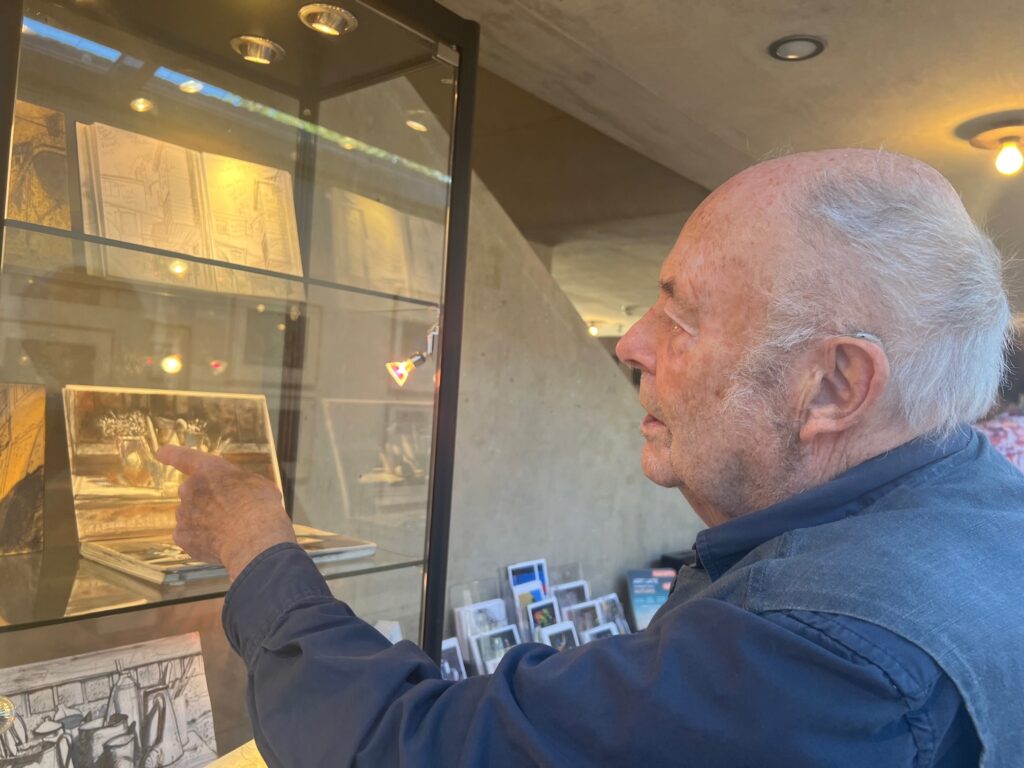
Once he finds a subject, whether it’s here in Oxford or on his travels in Crete, France or Norfolk, he sketches incessantly and once home assembles three to four canvases at a time to capture the changing light he witnessed.
“Sometimes they are only 40 minutes apart, but my painting is always about sun and shade, even if they don’t look very different.”

It seems odd then to be living in the UK where sunshine is so fleeting? “There were many times when I thought about moving to a ruined Cretan cottage,” he concedes. “I’m not afraid of living simply, but instead made do with visiting for three months every year.”
What was it he loved so much about the greek island? “The strength of the sun is inescapable there. It shattered me. It also helped me to re-establish my dialogue with what I was looking at – that endless conversation between light and dark that underpins my work and has remained with me ever since.”

“And besides I’ve loved living in Oxford. When I first came to Oxford I was accepted by the Oxford art community and that has been vital to my life, so I have been very fortunate.”
As for the strident The colour he uses, it is based around his black and white sketches, rather than a palette. “It means that the colour is related to the strength of dark and light, rather than saying ‘right we will have red here and blue here’,” he explains.
“But I also like looking between the walls at the spaces. What I realised through abstraction is that if you have two dark shapes close together the light is much stronger between them and that’s stuck with me.”
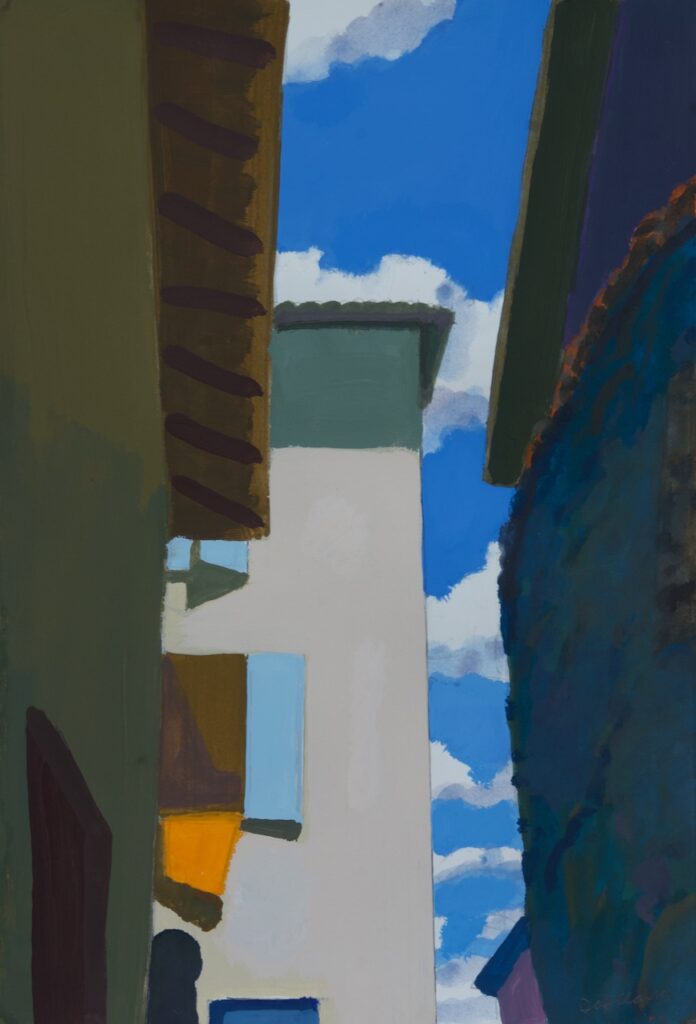
So in a way his abstract era paid off? “My abstraction experience is probably my painting’s greatest strength,” he agrees. “It has really helped me. Now the abstraction comes with the nature of the form rather than a pattern.”
That he’s found peace in his work is reassuring, having started out at a rather conservative art school in Brighton where he was born and bred. It wasn’t until his scholarship to Italy where he met the likes of Peter Blake and Bernard Cohen that he even knew abstraction existed: “They introduced me to a totally new world,” he remembers.
Soon mixing with the likes of Terry Frost and teaching at art schools and colleges all over the country, Jeff held at least five large and successful abstract exhibitions.
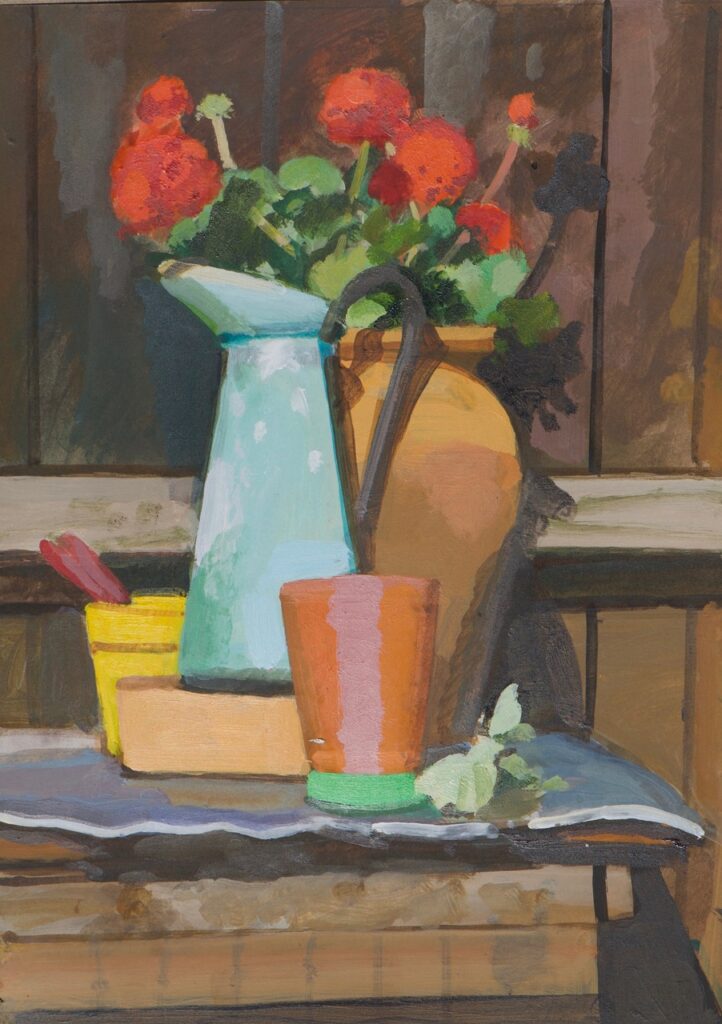
“People would have said I was a strong abstractionist but I couldn’t do it,” he shakes his head sadly.
Instead he took a job in Crete: “When I started drawing again, it just happened, I didn’t feel under any pressure,” he says.
“I realised I didn’t need to paint all the details. My job is to leave out what I don’t need and instead concentrate on the pattern of light.”
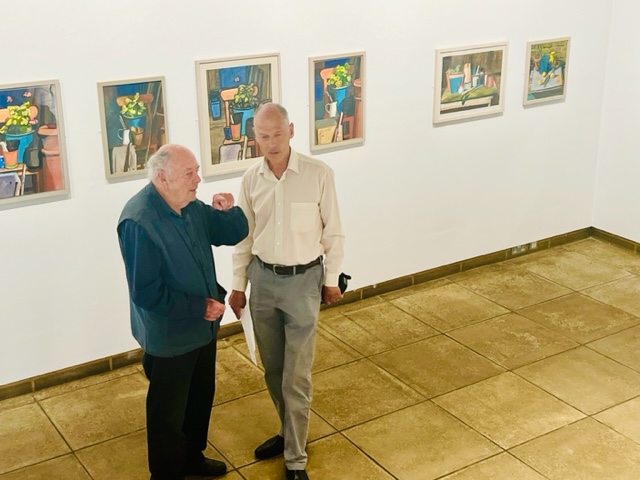
“I didn’t even think about showing any of that work for about 10 years, and then came back with a big show at Wolfson College of my Cretan work.
“It went down very well, and that established a new direction for me – painting sunlight on forms.”
He has also taught consistently through his life – at the Royal Academy Schools, Reading, Oxford and North Staffordshire Universities, and Berkshire College of Art. He is a Senior Fellow of the Royal Society of Painter-Printmakers.
So here we are, all these years later, walls of his work glimmering tantalisingly in front of us. “It’s six years since I had enough work for a show,” he says. “And now there is an enormous quantity of work here.”

So how does he feel to be here at his own retrospective: “It’s an exciting battle painting. It can sometimes be tough and at others exciting. It can also drive you nutty.
“And while my work can come out of discomfort, I have always seen the dialogue between that incessant movement between light and dark as a big metaphor, and to make that transition permanent.”
No regrets then? ‘The English painter John Craxton said it’s important to realise that life is more important than art, which came as quite a shock, but he’s right because it is so consuming. So sadness? Not about the art.”
Jeff Clarke’s Sunlight On Forms runs at the North Wall until September 23. https://www.thenorthwall.com/whats-on/jeff-clarke-sunlight-on-forms/











